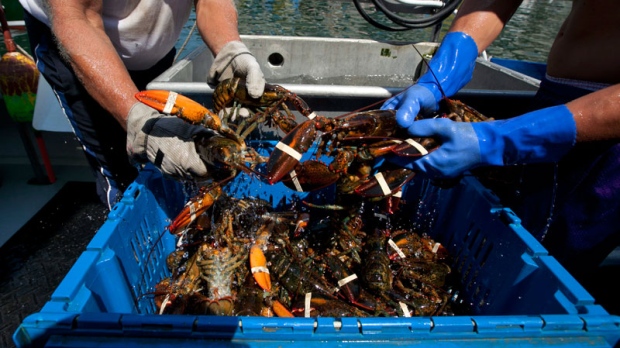By SYLVAIN CHARLEBOIS (AIMS Senior Fellow)
- Troy Media,14 August 2017
Let’s face it: lobsters are not easy on the eyes. The first person to discover that these hideous crustaceans were edible deserves a medal or two. At one time, lobster was the poor man’s protein that was fed mainly to prisoners. These days, however, the chicken of the sea is enjoying more love than ever; even President Donald Trump and French President Emmanuel Macron recently dined on blue lobster at the Eiffel Tower. Prices are up, and demand is high; right now, things are looking up for the industry.
Lobster’s popularity, however, has recently forced some food service companies to alter their festive menus. McDonald’s ceased its sales of McLobster in the Atlantic region this summer due to higher prices, making procurement an issue. All Atlantic region provinces and Quebec harvest lobsters, with Nova Scotia as the largest producer by far. The industry is now valued at over $1b, double of that in 2010. Suppliers cannot keep up with the growing appetite for lobster around the globe. Canadian lobster exports to China in particular have tripled since 2012; it is even sold online to China, thanks toAlibaba, which is distributing Canadian lobster.
But the lobster industry has had its lean times. For several years, lobster was not only cheap, it was a relatively unpopular product. Other than those in the Atlantic region, by way of curious tourists and lobsters boils, it was barely an afterthought. As a result, the industry started marketing lobster as an ingredient and not an entire dish. This shift in focus changed everything; lobster burritos, beer, donuts – lobster anything could be found on menus from coast to coast. The industry discovered that selling lobster as an ingredient attracts a different kind of consumer; one who is not keen in going through the effort of eating an entire lobster. After all, not all consumers are true Maritimers.
Lobster meat also makes a strong case for itself, health-wise; while it has long been considered a rich and indulgent feast, it actually contains fewer calories than an equal portion of skinless chicken breast. It also a healthy source of omega-3 fatty acids, potassium, and vitamins E, B-12 and B-6.

On the issue of trade, the lobster aficionado may be in for another treat and prices could go even higher. The Comprehensive European Trade Agreement (CETA), which is about to be implemented, will give a significant boost to Canada’s harvesters over those from Maine. Europeans will soon pay for lobster tariff-free, while paying a surcharge to Americans. Once freight and shrinkage fees are calculated in, lobsters can get expensive, so the CETA can make a significant difference. Europe imported more than $150 million in lobster from America last year, slightly less than what Canada imported. In addition to a lower dollar, the agreement makes our products more financially attractive to a continent teeming with affluent and hungry consumers. And under the Trump administration, we may not see Washington working to set a level playing field any time soon, but could raise this issue during upcoming North American Free Trade Agreement (NAFTA) talks. Nonetheless, CETA could also benefit Americans as they do send a good portion of their lobster catch to Canada for processing.
With this momentum, it is crucial not to price the product out of the retail market. These days, a $30 lobster roll is not unusual, and such higher price points may scare consumers away from the product. This is what happened to beef a few years ago when prices skyrocketed, forcing consumers to look elsewhere. Given the perception that lobster is, for the most part, a luxury product, it won’t take much for them to walk away.
The industry, supported by the Canadian Lobster Council, are doing things right and should continue on the same path; making the commodity more accessible is key to lobster’s future success. The industry just adopted a new branding strategy to tell the Canadian story. This is timely, since there were suspicions about some global mislabelling of Canadian lobster. Food fraud is real, and it is being addressed by the sector. The industry seemed to have had its share of success and failure, but from the outside looking in, it appears to be an industry starting to take control of its own destiny; you rock, lobster.
Sylvain Charlebois, Dean of the Faculty of Management, Professor in Food Distribution and Policy, Dalhousie University. Author of “Risk Intelligence and Benchmarking: The New World Order in Food”, published by Wiley-Blacwell (2017).






